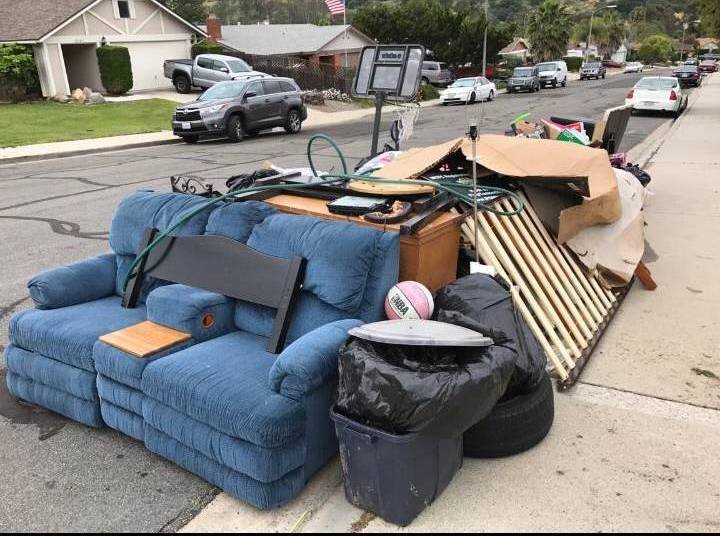Device Removal Atlanta: Quick and Safe Disposal Solutions
Device Removal Atlanta: Quick and Safe Disposal Solutions
Blog Article
Expert Waste Monitoring Approaches Customized for Industrial Setup
Tailoring waste administration methods to match the unique needs of industrial settings is not just valuable yet important for preserving operational effectiveness and environmental sustainability. The mission for enhanced waste administration in commercial setups includes a careful technique that stabilizes regulative compliance, cost-effectiveness, and ecological obligation.
Significance of Tailored Waste Administration
Tailored waste management techniques are important in industrial settings to enhance resource utilization and decrease environmental influence. Industrial procedures create a substantial quantity of waste, ranging from solid byproducts to chemical pollutants, posing a threat to the setting otherwise managed effectively (Junk removal Atlanta). By tailoring waste administration strategies to match the certain needs and obstacles of each industrial center, business can not only abide by guidelines but additionally improve operational efficiency and sustainability
One secret aspect of customized waste management is performing a detailed waste analysis to determine the types and quantities of waste generated. This evaluation permits business to carry out targeted services such as reusing programs, waste segregation procedures, and waste-to-energy initiatives. By comprehending the composition of their waste streams, commercial centers can establish cost-effective techniques to reduce waste generation at the source, bring about lasting environmental advantages.

Types of Hazardous Waste
What are the different categories of hazardous waste generally created in manufacturing processes? Industrial waste can be categorized into a number of primary classifications based upon its structure and attributes. Hazardous waste is one of the most vital kinds, including chemicals, solvents, heavy metals, and other materials that position a risk to human health or the environment. This category frequently requires special delivery and disposal methods to prevent contamination and ensure safety.
Another common kind of industrial waste is non-hazardous waste, which encompasses products like paper, plastics, and product packaging waste. While non-hazardous waste might not pose instant risks, proper monitoring is still important to decrease garbage dump use and promote recycling and sustainability techniques.

Contaminated Materials Handling Procedures
Reliable administration of hazardous waste in commercial settings freeport junk removal requires strict adherence to developed dealing with treatments to reduce risks and guarantee ecological safety. Contaminated materials handling treatments include a number of key actions to minimize the potential effect on human health and the atmosphere. Correct recognition and categorization of harmful waste are essential. This includes figuring out the characteristics of the waste to establish the ideal handling, storage, and disposal techniques.
Secondly, once identified, dangerous waste needs to be very carefully set apart from non-hazardous waste to stop contamination and make sure correct therapy. Storage of contaminated materials ought to adhere to policies relating to containment, labeling, and compatibility to avoid leaks, spills, or other events that could endanger workers or the atmosphere.
Moreover, dealing with procedures should include the use of individual safety equipment, staff member training, and emergency situation feedback methods. Routine inspections, monitoring, and documents of contaminated materials handling activities are essential to preserving conformity and recognizing locations for improvement. By following these structured procedures diligently, commercial facilities can efficiently take care of hazardous waste and copyright their dedication to environmental stewardship.
Executing Effective Reusing Practices

To carry out efficient reusing methods, commercial centers ought to first perform a waste audit to determine the kinds and amounts of recyclable products created in their operations. Based on this audit, companies can then develop assigned recycling terminals, provide proper training to workers on appropriate sorting methods, and work together with relied on recycling partners for the collection and handling of products. Additionally, setting certain reusing goals, tracking progression, and consistently communicating with team concerning the significance of recycling are important actions to make certain the success and sustainability of reusing initiatives in commercial setups.
Monitoring and Continuous Enhancement
To make certain the efficiency and sustainability of waste administration approaches in commercial settings, the application of robust monitoring and continual improvement processes is important. Monitoring entails tracking essential efficiency indicators (KPIs) such as waste generation rates, reusing portions, and disposal expenses. Frequently examining these metrics enables businesses to determine locations for renovation and determine the success of applied waste monitoring efforts.
Constant enhancement is essential for improving processes gradually. It includes examining checking data, determining ineffectiveness, and carrying out modifications to enhance waste administration methods additionally. This repetitive approach promotes a culture of continuous enhancement and development within the organization.
Making use of modern technology like waste tracking software application and IoT sensors can streamline monitoring efforts, giving real-time data for informed decision-making. Worker training and interaction additionally play a crucial role in making certain the success of monitoring and constant enhancement initiatives, as frontline staff are skunky's junk removal usually principals in waste management processes.
Conclusion
Finally, customized waste administration methods are important for industrial settings to successfully take care of various kinds of waste, including unsafe products. By applying reliable reusing practices and continually surveillance and improving waste monitoring processes, markets can lessen their environmental impact and guarantee compliance with laws. It is necessary for business to prioritize waste administration to secure the environment and advertise sustainability in their operations.
Report this page